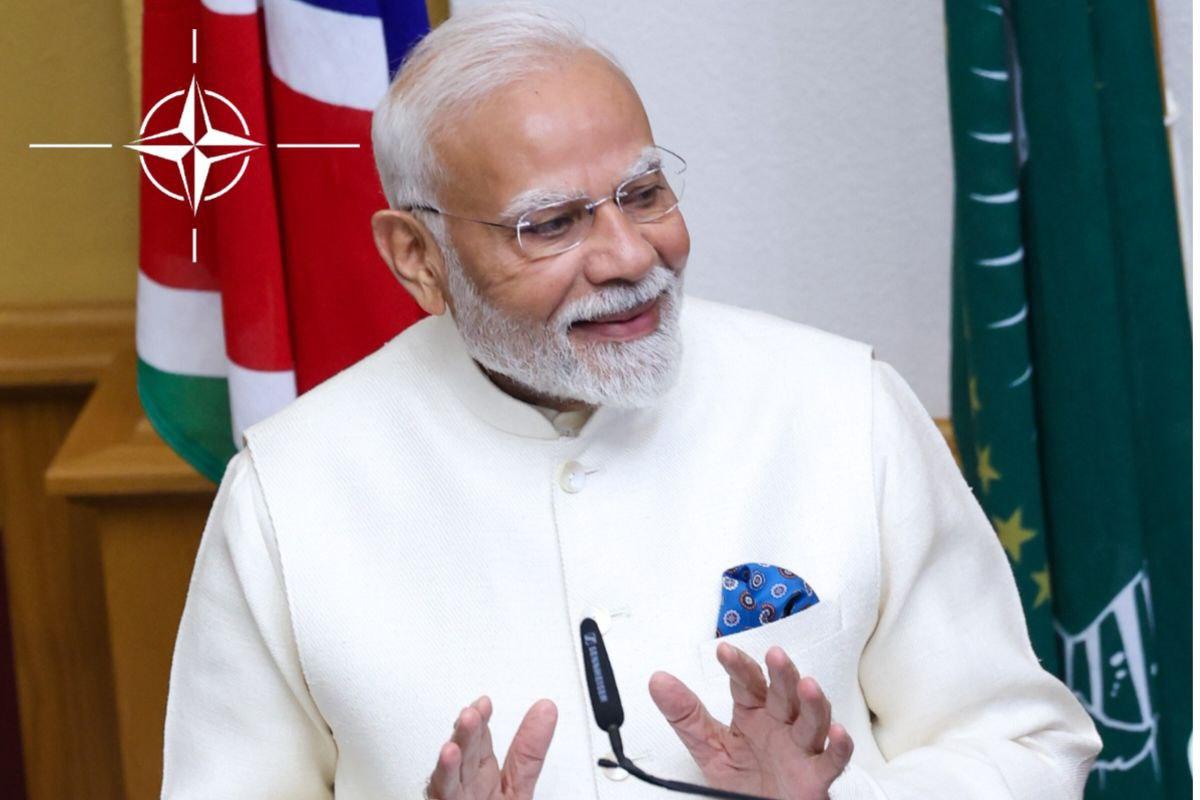
In a significant geopolitical development, NATO’s rhetoric towards BRICS nations—particularly India, China, and Brazil—has grown increasingly aggressive amid the ongoing Russia-Ukraine war. What was once quiet diplomatic displeasure has now turned into open threats and strategic isolation campaigns, especially directed at India. The United States and NATO are now using sharper tones, directly naming leaders and warning of severe consequences if they continue to engage with Russia economically.
The shift has come to the forefront with NATO’s new Secretary General, Mark Rutte, issuing a stern warning to BRICS nations. During a meeting in Washington with American lawmakers, Rutte directly named Indian Prime Minister Narendra Modi, Chinese President Xi Jinping, and Brazilian President Luiz Inácio Lula da Silva. He stated unequivocally that if these leaders continue to purchase oil and gas from Russia and resell it at high prices to other countries, they will face severe repercussions.
Rutte’s statement marks a bold escalation, indicating a coordinated campaign alongside U.S. President Donald Trump’s ongoing hardline stance against BRICS. Rutte added that secondary sanctions—100% tariffs—could be imposed on these nations if they don’t cease their trade relations with Moscow. “If you are the President of China, India, or Brazil, and this gets serious about peace, I will go secondary on you 100%,” Rutte declared, emphasizing that this is not merely rhetoric but a potential policy path.
These remarks come at a time when NATO appears to have fully aligned itself with the U.S. administration’s goal of isolating Russia economically and diplomatically. What is notable in this development is the explicit naming of India, something rarely done with such directness in prior NATO briefings. This highlights a turning point in NATO’s strategy—from quiet pressure to public confrontation.
The pressure campaign against India is not new. Both U.S. Presidents Joe Biden and Donald Trump have made efforts in the past to discourage India from purchasing discounted Russian oil. However, India has consistently maintained its stance, asserting that it will prioritize its national interest over geopolitical expectations. New Delhi has repeatedly emphasized that its energy needs and economic priorities cannot be compromised, especially when global energy markets are unstable.
Since the beginning of the Russia-Ukraine conflict, India has significantly increased its oil imports from Russia, becoming one of the largest buyers of discounted Russian crude. India has argued that these imports have helped stabilize its economy and control inflation. Despite criticism, Prime Minister Modi's government has continued this policy, asserting energy security as a non-negotiable sovereign right.
However, Trump’s return to the White House has intensified the campaign. Unlike the Biden administration’s relatively cautious public stance, Trump and his allies are openly framing BRICS—especially India and China—as enablers of Russia’s war economy. NATO, under Rutte, now appears to be echoing this sentiment, making India a primary target of its diplomatic offensive.
The timing of these warnings is crucial. Russian President Vladimir Putin has made it clear that he is not prepared to halt his military campaign in Ukraine. On the other hand, Trump is reportedly eager to bring Putin to the negotiating table and end the conflict. With Moscow refusing to budge, the West seems to be turning to economic coercion against Russia’s key trading partners as a pressure tactic.
The strategy is clear: isolate Russia not only through direct sanctions but also by targeting countries that sustain its economy through trade. BRICS, being a growing alternative global economic bloc, is now in the direct line of fire. This reflects a broader geopolitical confrontation where institutions like NATO and alliances like BRICS are being positioned as adversaries.
For India, the consequences could be serious. If NATO countries impose a 100% tariff on Indian goods or implement secondary sanctions, it could disrupt trade flows, hurt exports, and strain economic growth. India’s dependence on global markets, especially the West, for trade and investment makes this a high-stakes situation.
However, the critical question remains: can NATO follow through with such threats? While the rhetoric is aggressive, actual implementation of 100% secondary sanctions against major economies like India and China would trigger global economic ripples. It would also risk pushing these nations closer to Russia and strengthening the BRICS alliance further.
India now finds itself in a tight spot—balancing its strategic autonomy with rising Western pressure. The outcome of this geopolitical tug-of-war will not only impact the Russia-Ukraine conflict but may also redefine global alliances and economic partnerships for years to come.
As Trump and NATO intensify their push against BRICS, and especially India, the coming months could witness a further fracturing of global consensus. Whether India caves to pressure or doubles down on its independent foreign policy will shape not just its future but also the future of the international order.




